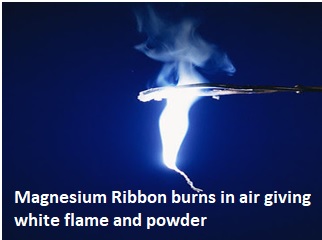Combination Reactions Study Guide
INTRODUCTION:
Imagine you ordered a ceiling fan, and all you got was a central motor and no blades. What good is the rotating head without the blades? The motor in itself serves no purpose when used alone. On the other hand, the blades are useless without the motor. Without one another, they are just a piece of hardware. However, if we combine those two, it will serve the purpose we bought it. In other words, we combined two disparate components that were of no particular use to us to create a system that will be useful to us.
COMBINATION REACTIONS:
- A combination reaction is when two or more reactants unite to generate a single product.
- To put it simply, when two or more elements or chemicals react to generate a single molecule, the chemical reaction is known as a combination reaction.
- A synthesis reaction is another name for a combination reaction.
- A combination reaction occurs when carbon is burned in the vicinity of oxygen to create carbon dioxide.
- The outcome of a combination reaction between a metal and a non-metal is an ionic solid.
- When magnesium is burned in the presence of oxygen, the metal’s atoms unite to form magnesium oxide. Flares emit a brilliant flame as a result of this precise combo reaction.
The general representation of these is A + B = AB.
Another example is of sulfur and oxygen reaction to form sulfur dioxide:
S(s) + O₂(g) → SO₂(g)
A molecular molecule is formed when nonmetals interact with one another. Nonmetal reactants are often combined in varied ratios to form diverse products. Sulfur reacts with oxygen to form sulfur trioxide.
2S(s) + 3O₂(g) → 2SO₃(g)
Within their ionic complexes, transition metals can take several positive charges. As a result, most transition metals may produce a variety of compounds in a combination reaction. Both iron (II) oxides and iron (III) oxides are formed when iron combines with oxygen.
2Fe(s) + O₂(g) → 2FeO(s) 4Fe(s) + 3O₂(g) → 2Fe₂O₃(s)
CONCLUSION:
- A process in which two or more chemicals combine to generate a single new compound is known as a combination reaction.
- Synthesis reactions are another name for combination reactions.
- Sulfur dioxide is formed when sulfur combines with oxygen.
- Combination reactions are generally exothermic.
FAQS:
1. When sulfur and oxygen react, what happens?
Sulfur dioxide is formed when sulfur combines with oxygen. A molecular compound is formed when non-metals interact with one another. Sulfur may also form sulfur trioxide when it reacts with oxygen.
2. What is the balanced equation for the combination of sulfur and oxygen to form sulfur dioxide?
S + O₂ → SO₂
3. How is sulfur dioxide formed?
Often known as SO₂, Sulfur dioxide is a colorless gas with a pungent, suffocating stench. It is made from the combustion of fossil fuels (coal and oil) and the smelting of sulfur-containing mineral ores (aluminum, copper, zinc, lead, and iron). Sulfur dioxide is easily dissolved in water and converted to sulfuric acid.
We hope you enjoyed studying this lesson and learned something cool about Sulfur and oxygen forming sulfur dioxide! Join our Discord community to get any questions you may have answered and to engage with other students just like you! Don’t forget to download our App to experience our fun, VR classrooms – we promise, it makes studying much more fun! 😎
SOURCES:
- Combination reaction. https://www.ck12.org/c/chemistry/combination-reactions/lesson/Combination-Reactions-CHEM/. Accessed 31 Jan 2022.
- 11.4: Combination Reactions. https://chem.libretexts.org/Bookshelves/Introductory_Chemistry/Book%3A_Introductory_Chemistry_(CK-12)/11%3A_Chemical_Reactions/11.04%3A_Combination_Reactions. Accessed 31 Jan 2022.
- Types of Chemical Reactions. https://byjus.com/chemistry/types-of-chemical-reactions/. Accessed 31 Jan 2022.


